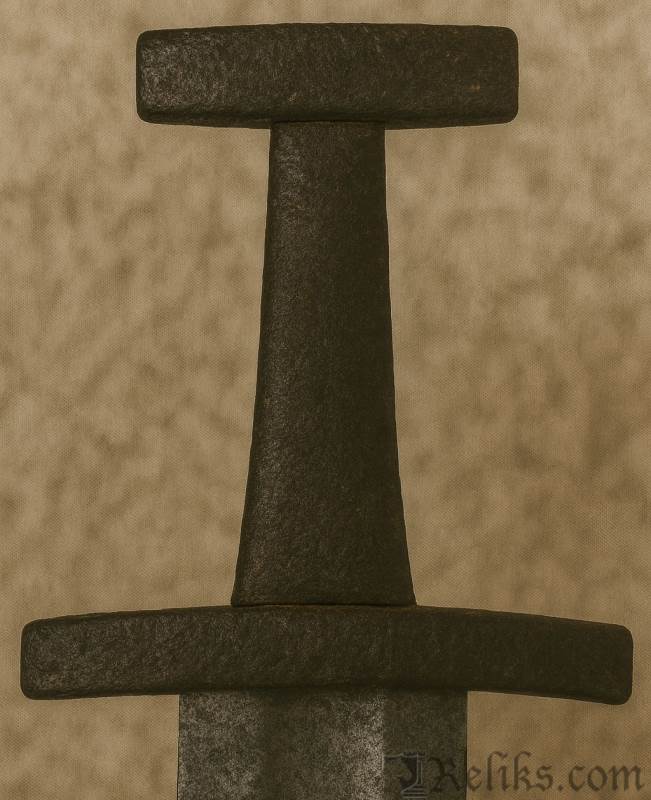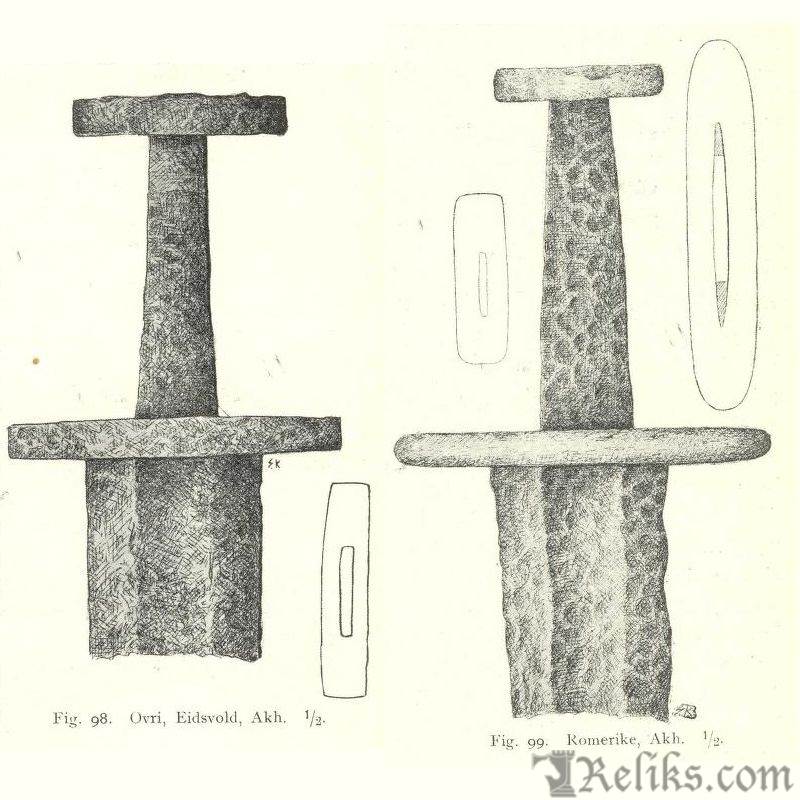Viking Sword Type M (Mid–Late 9th Century)
Defining Features
Type M is one of the simplest and most numerous of Petersen’s Viking sword classifications. Its defining characteristic is the complete absence of a pommel: both upper and lower guards are straight and of nearly equal height, creating a plain, unornamented silhouette. The guards are generally flat-sided, though some examples show a slight convex curve to the long faces, giving a subtle variation in appearance.
Most guards are bluntly cut off at the ends, but a few taper to rounded or pointed terminations. The hilts lack decoration altogether — no engraved lines, inlays, or metal sheathing are found on any known specimens. This stripped-down construction makes Type M the most utilitarian sword type of the Viking Age. Its proportions, however, could vary: some hilts are squat and heavy, others slimmer and elongated, reflecting different workshops or regional preferences.
Distribution and Frequency

Viking Sword Type M — The Most Common and Simplest Viking Sword
With nearly 200 known examples, Type M is the second most common Viking sword after Type H. The type is particularly abundant in eastern Norway, especially Akershus, Hedemarken, Buskerud, and Bratsberg. Kristians Amt alone produced over twenty examples, rivaling all other districts combined. By contrast, coastal regions from Lister through Trøndelag show fewer finds, where Type H swords were more prevalent.
Interestingly, despite its plainness, Type M travelled beyond Norway. A few examples are preserved in Sweden — notably in Lund, Birka, and Dalarna — as well as in Denmark at Tissø on Sjælland. At least one specimen has also been found in Iceland, proving the type’s circulation across the Viking world.
Dating and Archaeological Context

Petersen Sketches (fig.98-99)
Type M first appears in the mid-9th century and remains common into the early 10th. The majority of examples cluster in the second half of the 9th century, where they are often found alongside spearheads of Type F, axes of E and G forms, and shield bosses of the R 562–564 group.
One particularly early specimen from Eidsvoll (C 7605) features a tall, massive guard reminiscent of Migration-period swords, suggesting continuity with older traditions. By the later 9th century, however, most M-types are lighter and plainer, often associated with simpler grave goods.
The blade forms are overwhelmingly double-edged, though a handful of single-edged examples exist. While most are undecorated, a few carry traces of damascening, and at least one was clearly imported, showing that the type was not exclusively of local manufacture.
Interpretation
Type M represents the Viking sword at its most practical. Where other types were showcases for prestige — gleaming with silver, bronze, or intricate carvings — the M-type was stripped down to essentials. It provided a strong, serviceable hilt, easy to forge, and durable in use. Its widespread distribution, particularly in eastern Norway, suggests it was the “standard issue” sword for many warriors of the later 9th century.
Though modest in appearance, the sheer number of Type M swords found in graves indicates their owners still regarded them as prized weapons. These swords reflect a society in which not every warrior was an elite chieftain with a decorated blade, but many could still carry a trusted sword of proven design into battle.
Core classification based on Jan Petersen, De Norske Vikingesverd (1919). Additional commentary by Reliks.com.